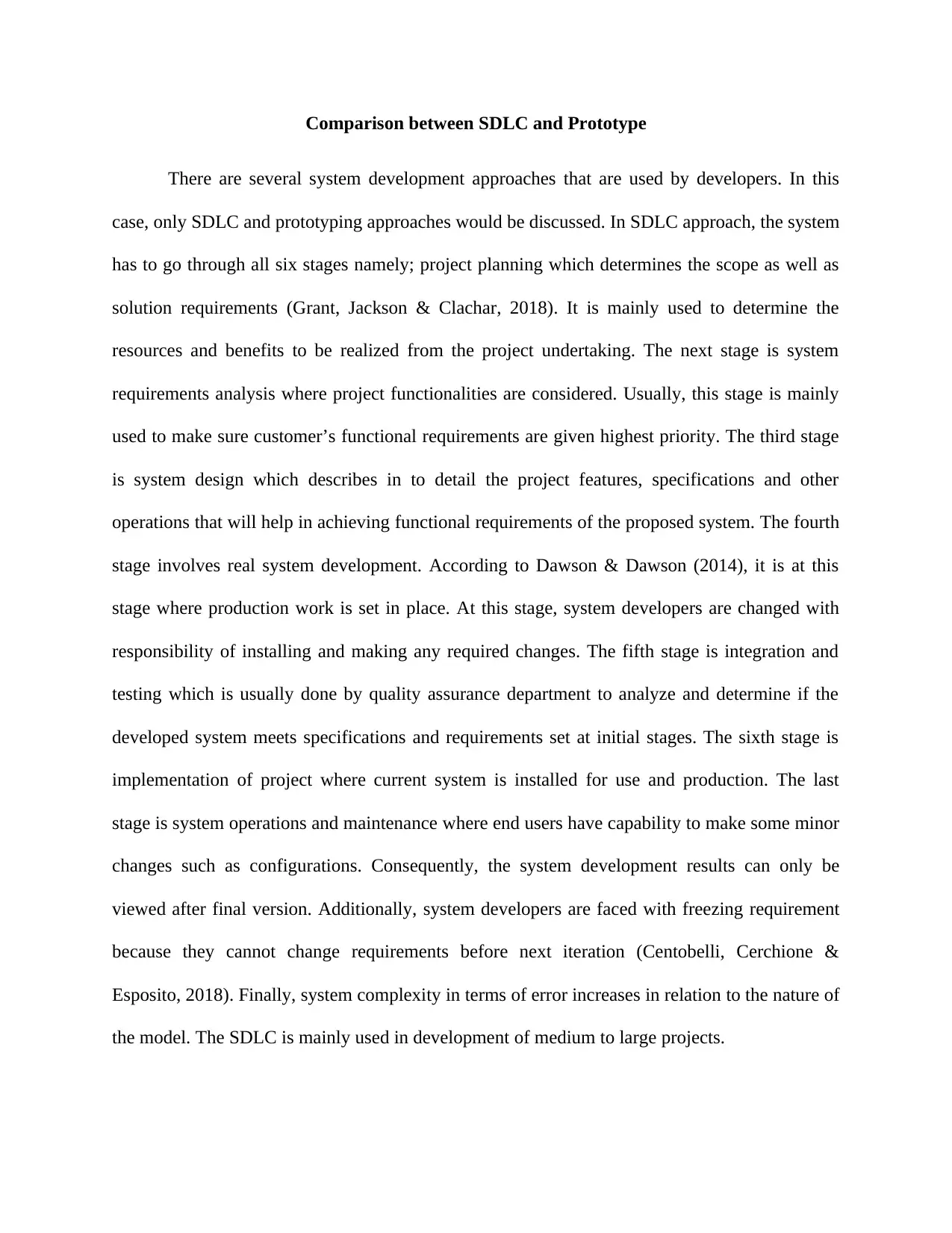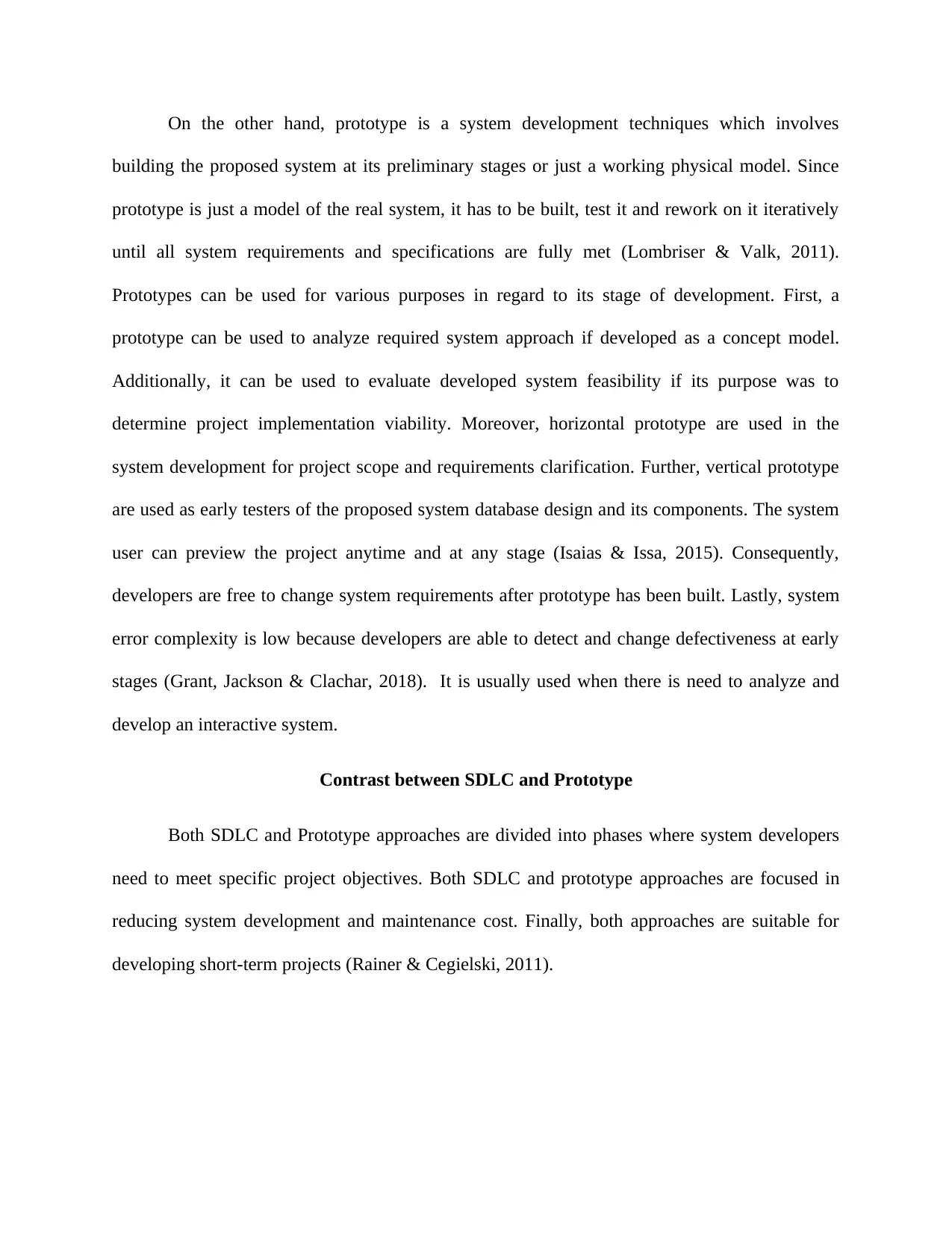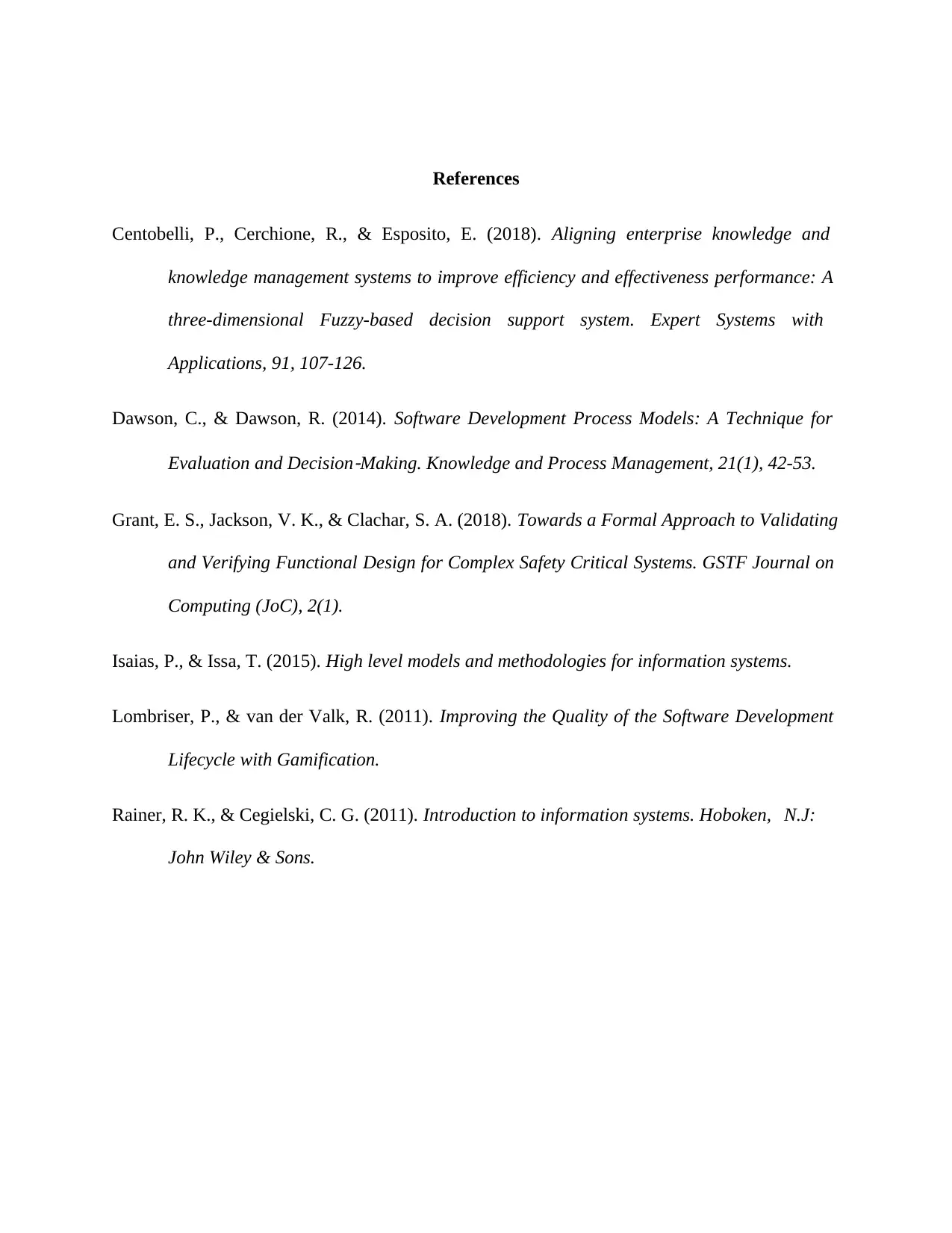A Comparative Analysis of SDLC and Prototype Development Methods
VerifiedAdded on 2021/05/31
|4
|852
|50
Report
AI Summary
This report provides a comparative analysis of two primary system development approaches: the System Development Life Cycle (SDLC) and prototyping. The SDLC approach, characterized by its structured, sequential phases, including planning, analysis, design, development, testing, and implementation, is suitable for medium to large projects. It emphasizes thorough planning and documentation but can be inflexible to changing requirements. In contrast, the prototyping approach involves building preliminary versions of the system, allowing for iterative feedback and adjustments throughout the development process. The report highlights the advantages of prototyping, such as the ability to incorporate user feedback early and adapt to changing requirements, making it ideal for interactive systems. The report also contrasts these two approaches by discussing their suitability for different project types, their handling of requirement changes, and their impact on system error complexity. The report concludes by emphasizing that both approaches have their own benefits and are suitable for short-term projects, focusing on reducing system development and maintenance costs.
1 out of 4











![[object Object]](/_next/static/media/star-bottom.7253800d.svg)